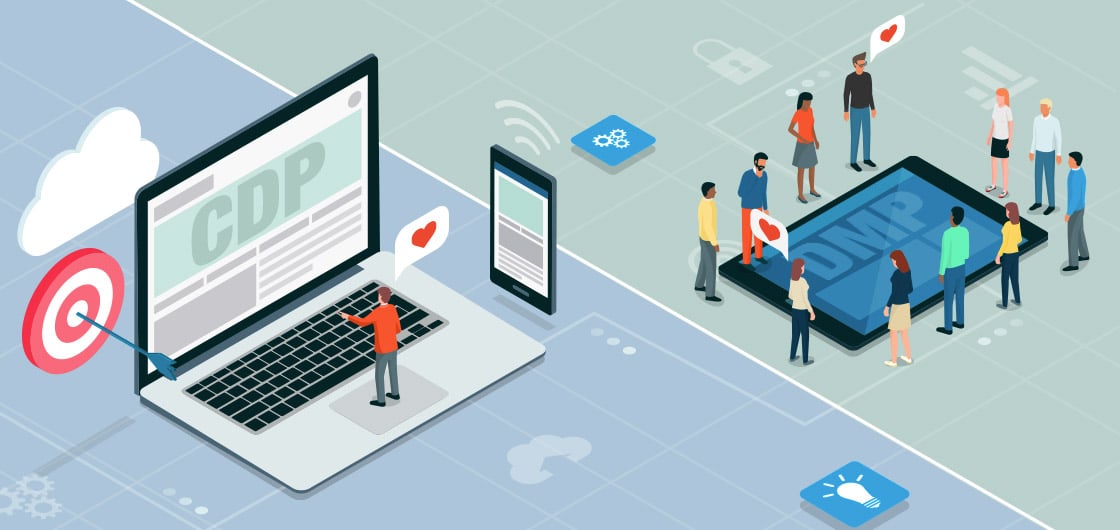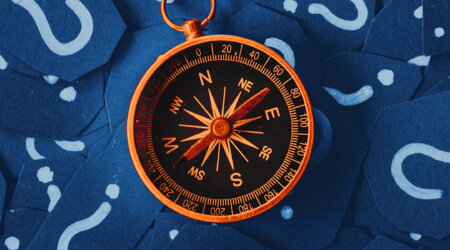Analytics Blog

What Is the Difference Between a DMP and CDP, and Do I Need One?
There’s only one way organizations can compete these days, and that’s by putting the customer first. As this MarTech Today article points out, by 2020, customer experience will overtake price and product as the key brand differentiator, according to Frost & Sullivan.
…by 2020, customer experience will overtake price and product as the key brand differentiator… Click & Tweet!
In order to give your customers what they expect, you have to be able to collect data across all customer journey touchpoints and use that data to provide the right experiences. So, how do we do this? More and more organizations are investing in Customer Data Platforms (CDPs) and Data Management Platforms (DMPs) to help capture, correlate, and manage their customer data.
However, there is still a lot of confusion from executives around how these technologies are different, and which solution is best for their business. I’m going to help clear some of that up for you.
What Is a CDP?
Customer Data Platforms (CDPs) are a more recent technology solution, and they are capable of collecting data from multiple online and offline interactions and matching them to a single customer profile. One of the best features of CDPs is they can profile interactions from anonymous customers and retroactively tie that data to a customer once it is identified (reverse stitching).
CDP Example Use Case:
Your CDPs ability to stitch customers across devices make personalization use cases very compelling. Personalization efforts will help improve customer experience and deliver a consistent brand message. Your CDP can be used to deliver retargeting incentives or to help support GDPR compliance.
What Is a DMP?
Data Management Platforms (DMPs) have been in the market much longer and they are part of the MarTech stack. They are ideal for advertising and acquisition campaigns, since they work best with new or anonymous audiences.
DMP Example Use Case:
You can use your DMP to collect and organize data about your customers. If you know that your best customers are dads who are 25-34, then you could target ads through a Demand-Side Platforms (DSP) to audiences who look like your best customers (look-alike modeling). DMPs and DSPs are designed to work together, and you will get the highest match rate to your DSP from a DMP.
The key differences between a CDP and a DMP are their primary functions. DMPs are designed to be advertising platforms, while CDPs focus on 1st party data to target customers across their journey.
Wait…DMP and a CDP Aren’t the Same?
According to the Gartner for Marketers:
“The DMP negotiates our beloved programmatic advertising, while the CDP – by definition – is grounded in individuals known by name, email, customer number or another personal ID. The DMP operates on massive audiences; the CDP, on a sensible number of souls.”
— Martin Kihn, Gartner for Marketers
How are DMPs and CDPs Similar?
Before looking at the differences between a Customer Data Platform vs. a Data Management Platform, let’s keep in mind that there are several similarities between them. Such as:
- Leveraging existing customer data
- Creating a single view of the customer
- Using your data for Audience activation
- Reporting, analysis, optimization
Comparison: DMP vs CDP
| DMP | CDP | |
|---|---|---|
| Privacy and anonymity is the backbone of the DMP. Since data is being exchanged with a DSP, everything needs to be anonymous. 2nd and 3rd party data dominate. The leading DMPs will also accept 1st party data. | Data Types (Including PII) |
PII, 1st, 2nd, 3rd party, anonymous, DMP data and interaction history |
| Cookies and segmented audience IDs | Data Sources | Structured, unstructured, semi-structured |
| DMPs often retain information for a limited time or based on the lifespan of a cookie (90 days) | Data Detail | CDPs capture clickstream data and are capable of storing historical information in large capacity. |
| Audience creation, advertising, acquisition marketing and digital targeting. | Use Case | Single view of customer (1:1). Most CDPs can be integrated beyond the MarTech stack including systems like a CRM or call center. |
| Event driven, and on-boarding typically requires 24 hours | Measure | Continuous and real-time |
| DSP (advertising) | Activation | Direct customer engagement |
| Look-alike modeling | Analytics | A/B/n testing and machine learning |
| Probabilistic – less accurate based on Algorithms. Most commonly used through activation with a DSP. Leading DMPs do have the capability to integrate with device graphs. | Cross Device Identity | Deterministic matching – more precise based on unique IDs: emails, phone numbers etc. |
| Anonymous | Identity | Anonymous + known |
Which One Do I Need?
Great question…but you should start with understanding your company’s use case. How do you want to use your data? Why are you buying? What are your core needs? Take a look at the required use case and how they match to your needs in the near term and the future. And what is your analytics maturity?
Before you consider either (or both) of these tools, make sure you have the dedicated resources and the executive sponsorship to ensure success. Neither of these tools are set-it-and-forget-it type solutions. They both require ongoing support and resources to build, manage and maintain your use cases.
A DMP and CDP Can Be Complementary
Even though there are differences between DMPs and CDPs, they do not need to be competing technologies; they can complement each other. You can ingest your DMP data into a CDP to improve segmentation and optimize the experience for those visitors. You can push your customer data platform data into your data management platform to improve the accuracy of your look-alike audiences. Once you have attracted that customer to your site, that is when the CDP can take over, providing real-time personalization.
How DMP and CDP Align to Customer Journey

If You Must Choose…
If you only have the budget for one solution, then choose a CDP. It is a more versatile solution for long-term customer reach and its ability to integrate with systems beyond marketing and impact customer engagement will provide additional ROI.
The success of your customer data platform is dependent on adoption across your organization; while a CDP is primarily a marketing tool, there are many stakeholders involved including IT, marketing, product and executive leadership. Keep in mind, you need to have good first-party data to take full advantage of a CDP solution and be prepared to control your scope with the initial implementation.
Keep in mind, you need to have good first-party data to take full advantage of a CDP… Click & Tweet!
There are a wide range of exciting use cases that are available, but you want to make sure you are not going to run into technology or resource constraints within your organization. Choose 1 or 2 use cases that are achievable and that will show immediate success and will create excitement within your organization.
Now that you understand the differences between a CDP and DMP, watch for an upcoming blog post on powerful things you can do with a CDP. Along with some compelling use cases and a comparison of some of the top customer data platforms.
Please share any requests on what you would like us to cover regarding CDPs or DMPs. Let us know if you are interested to hear how CRMs (or other marketing technology) fits into the MarTech stack and compares with CDPs and DMPs.









